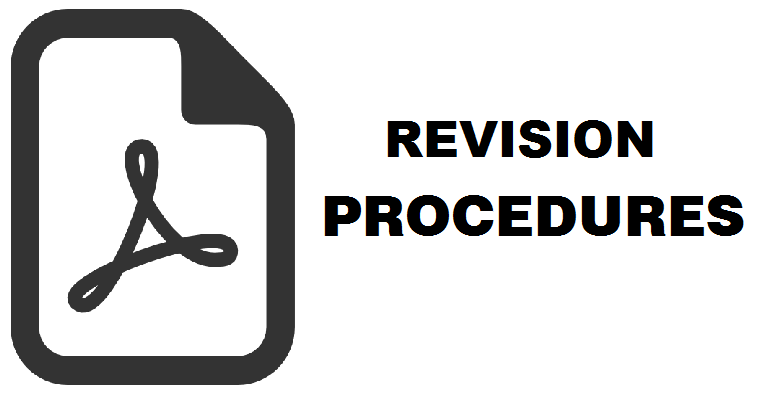Kualitas Struktur Tanah di Setiap Bentuklahan di DAS Kaliwungu
Adhera Sukmawijaya(1*), Junun Sartohadi(2)
(1) Fakultas Geografi, Universitas Gadjah Mada, Yogyakarta , Indonesia
(2) Fakultas Pertanian, Universitas Gadjah Mada, Yogyakarta, Indonesia
(*) Corresponding Author
Abstract
Pengelolaan tanah untuk pertanian yang berkelanjutan perlu untuk memeperhatikan 2 hal, yaitu bentuklahan dan tanah. Faktor tanah yang perlu diperhatikan adalah struktur tanah. Penelitian yang fokus pada bentuklahan, struktur tanah, dan implikasinya pada pengelolan belum pernah dilakukan di DAS Kaliwungu. Penelitian bertujuan untuk menganalisis struktur tanah pada setiap bentuklahan sebagai dasar untuk pengelolaan tanah yang berkelanjutan. Kualitas struktur tanah ditentukan dari observasi profil tanah pada setiap bentuklahan. Identifikasi bentuklahan dilakukan berdasarkan pengumpulan data dari Kendaraan Nirawak. Viusal Evaluation of Subsoil Strucutre (SubVESS) digunakan untuk menentukan kualitas struktur tanah berdasarkan karakteristik struktur tanah. Hasil menunjukkan bahwa area penelitian memiliki kualitas struktur tanah yang baik dengan mayoritas nilai kualitas strutktur tanah yang berkisan antara Ssq 1-3. Tidak diperlukan adanya perubahan dalam pengelolaan tanah pada area kajian.
Soil management for sustainable agriculture needs to focus on 2 things, which are landform and soil. Soil factor that needs to be focused on is soil structure. The study that focused on landform, soil structure and its implication on soil management has never been done in Kaliwungu Watershed. This research aims to analyze soil structure on every landform as the basis to determine sustainable soil management. Soil structure quality was determine by soil profile observation on every landform. Unmanned Aerial Vehicle (UAV) photographic data was used to identify each landform. Visual Evaluation of Subsoil Structure (SubVESS) was used to identify the quality of soil structure based on its characteristic. The result shows that study area has a good soil structure quality with the majority of soil layer has a good soil structure quality (Ssq 1-3). There is no need to change in soil management is needed.
Keywords
Full Text:
PDFReferences
Amuyou, U.A., & Kotingo, K.E. (2015). Toposequence analysis of soil properties of an agricultural field in the Obudu Mountain slopes, Cross River State-Nigeria. European Journal of Physical and Agricultural Sciences, 3(1). 1-11.
Ball, B.C., Batey, T., Munkholm, L.J., Guimares, R.M.L., Biozard, H., McKenzie, D.C., Peigne, J., Tormena, C.A., & Hargreaves, P. (2015). The numeric visual evaluation of subsoil structure (SubVESS) under agricultural production. Soil and Tillage Research, 148. 85-96. https://doi.org/10.1016/j.still.2014.12.005
Bronick, C.J., & Lal, R. (2005). Soil structure and management: A review. Geoderma, 124. 3-22. https://doi.org/10.1016/j.geoderma.2004.03.005
Buntley, G.J., & Westin, F.J. (1965). A comparative study of developmental color in a Chestnut-Chernozem-Brunizem soil climosequence. Soil Science Society of America Proceedings, 29. 579-582. https://doi.org/10.2136/sssaj1965.03615995002900050029x
Diaz-Zoritha, M., Perfect, E., & Grove, J.H. (2002). Disruptive method for assessing soil structure. Soil and Tillage Research, 64, 3-22. https://doi.org/10.1016/S0167-1987(01)00254-9
Johannes, A., Weisskopf, P., Schulin, R., & Boivin, P. (2017). To what extent do physical measurement match with visual evaluation of soil structure? Soil and Tillage Research, 173. 24-32. https://doi.org/10.1016/j.still.2016.06.001
Joyontono, P. (2016). Penilaian perkembangan tanah di lereng gunungapi Ijen berdasarkan pendekatan pedogeomorfologi. Skripsi. Program Geografi dan Ilmu Lingkungan Universitas Gadjah Mada.
Lal, R., & Shukla, M.K. (2004). Principles of soil physics. New York: Marcel Dekker, Inc.
Munkholm, L.J., Heck, R.J., Deen, B., & Zidar, T. (2016). Relationship between soil aggregate strength, shape and porosity for soils under different long-term management. Geoderma, 268. 52-59. https://doi.org/10.1016/j.geoderma.2016.01.005
Novara, A., Armstrong, A., Gristina, L., Semple, K.T., & Quinton, J.N. (2012). Effect of soil compaction, rain exposure and their interaction on soil carbon dioxide emission. Earth Surface Processes and Landforms Vol: 37(3). 994-999. https://doi.org/10.1002/esp.3224
Padilla, W.A. (1983). Relationship between erosion and soil physical properties of temperate and tropical soils. Desertasi. Program Pasca Sarjana University of Minnesota.
Redjeki, R.S. (2008). Kajian pengelolaan lingkungan pada kawasan Gunung Sindoro dan Sumbing (studi kasus di Desa Sigedang dan Desa Butuh Kabupaten Wonosobo). Tesis. Program Ilmu Lingkungan Pasca Sarjana Universitas Diponegoro.
Sartohadi, J., Suratman, Jamulya, & Dewi, N. I. S. (2014). Pengantar geografi tanah. Yogyakarta: Pustaka Pelajar.
Schaetzl, R. J., & Anderson, S. (2005). Soil: Genesis and geomorphology. Cambridge: Cambridge University Press.
Silva Neto, E.C. da, Pereira, M.G., Fernandes, J.C.F, & Andrade Correa Neto, T. de. (2016). Aggregate formation and soil organic matter under different vegetation types in Atlantic Forest from Southeastern Brazil. Cilencial Agrarias, 37(6). 3927-3940. http://dx.doi.org/10.5433/1679-0359.2016v37n6p3927
Steila, D. (1976). The geography of soil. New Jersey: Prentice-Hall, Inc.
Walkley, A., & Black, I.A. (1934). An examination of the Degtjareff method for determining soil organic matter and a proposed of the chronic acid titration method. Soil Science 37(1). Hal: 29-38.
Zinck, J.A., Matternicht, G., Bocco, G., dan Del Velle, H.F. (2016). Geopedology: An integration of geomorphology and pedology for soil and landscape studies. Heidelberg: Springer.
Article Metrics
Refbacks
- There are currently no refbacks.
Copyright (c) 2019 Majalah Geografi Indonesia

This work is licensed under a Creative Commons Attribution-ShareAlike 4.0 International License.
Volume 35 No 2 the Year 2021 for Volume 39 No 1 the Year 2025
ISSN 0215-1790 (print) ISSN 2540-945X (online)








